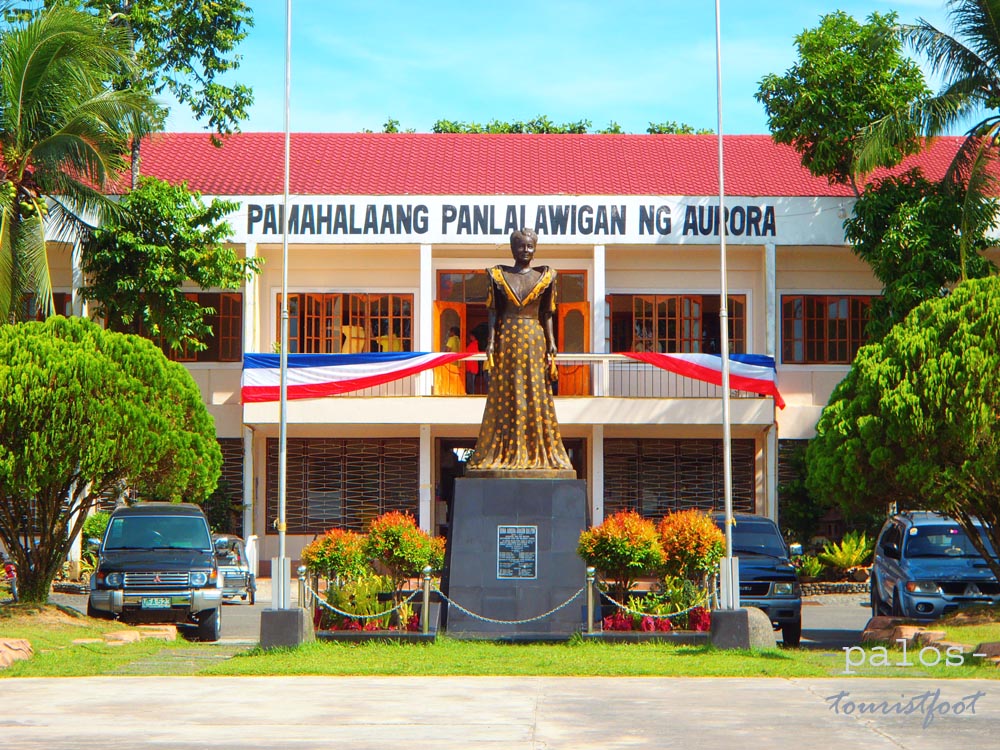

Aurora is a province of the Philippines and is located in the Central Luzon region. It is located just north of Quezon Province on the east coast of Luzon. The province consists of 8 municipalities and 151 barangays. Its capital is the municipality of Baler. Aurora borders the provinces of Quezon, Bulacan, Nueva Ecija, Nueva Vizcaya, Quirino and Isabela. To the east of the province is the Philippine Sea. Aurora was named after Aurora A. Quezon, the wife of President Manuel Quezon of the Philippine Commonwealth. Both of them were born in the capital town of Baler. The early history of Aurora is linked to Quezon province,of which it formed a part until its establishment as a province. It became a sub-province of Quezon in 1951, and finally became an independent province during the presidency of Ferdinand E. Marcos, by virtue of Batas Pambansa Blg. 7 enacted on August 13, 1979. More than half of the population of Aurora is Tagalog,mainly in the municipalities south of Baler; about less than one-third is Ilocano, particularly in municipalities north of Baler; and some are Kapampangan in the capital. Other ethnic groups in the province are Bicolano,Kasigurahin and Kankana-ey. They comprised about 16% of the population. There are also pockets of Negritos, called Dumagats in the province. Most Dumagats are living in the hillsides or mountains and survive from fishing and hunting. They are believed to have resulted from a fusion of Austronesian and Melanesian ancestries. There are three kinds of Dumagats in Aurora province: the Umiray Dumagat, Casiguran Dumagat, and the Palanan Dumagat. All of these subgroupings have the Bible translated into their own language. Aurora is heavily forested and the cleared land is used mostly for farming. The principal products are copra,rice, banana, coffee, pepper, and citrus, plus various wood and fish products. There is some cottage weaving in the province. The provincial government is trying to develop the food-processing and wood-processing industry.The province is exposed to Pacific typhoons, and is hit by an average of four typhoons per year, some of devastating severity. On the other hand, it is a fine place for surfing, as well as scuba-diving and snorkeling, though local support services are not readily found. It also has dramatic scenery on the side of the mountains.


In 1572, the Spanish explorer Juan de Salcedo became the first European to visit the region that would be known as Aurora while he was exploring the northern coast of Luzon. Salcedo reportedly visited the towns of Casiguran, Baler and Infanta. In the early days of the Spanish colonial period, Aurora was ecclesiastically linked toInfanta, which today rests further south, in northern Quezon. The earliest missionaries in the province were the Franciscans, who had established missions in Baler and Casiguran in 1609. Due to lack of available personnel, the region was given to the jurisdiction of the Agustinians and Recollects in 1658, but was returned to the Friars Minor in 1703. Other early missions included Dipaculao, established in 1719, and Casiguran, in 1753.The early history of Aurora is linked to Quezon Province, of which it formed a part until its establishment as a province, and Nueva Ecija, under which the area was governed as the District of El Pr�ncipe. Aurora became a sub-province of Quezon in 1951, and finally attained provincehood during the presidency of Ferdinand E. Marcos, by virtue of Batas Pambansa Blg. 7 enacted on August 13, 1979.